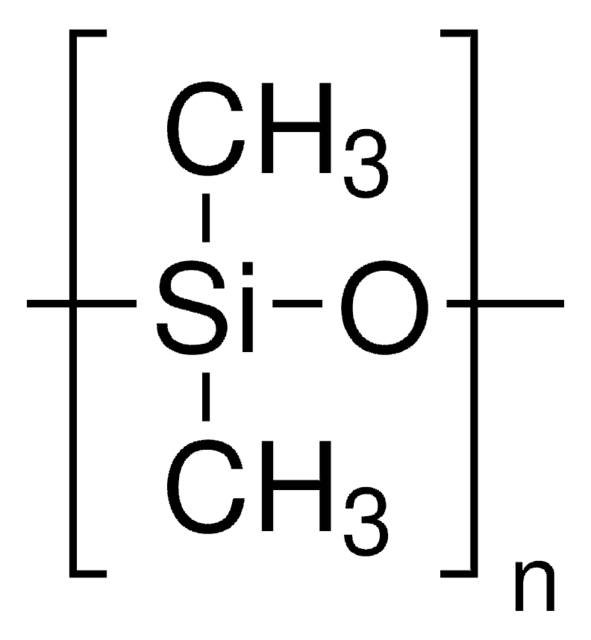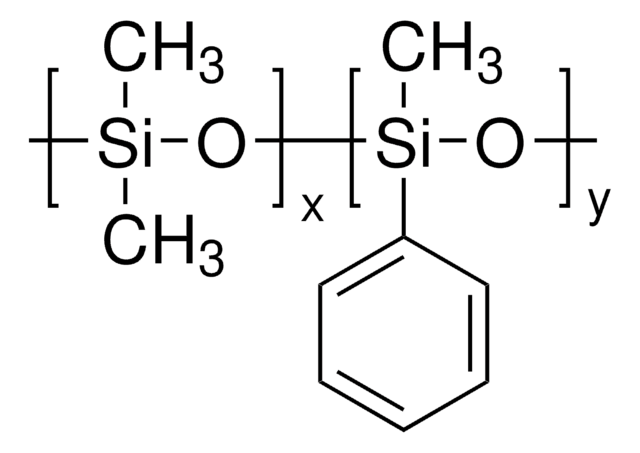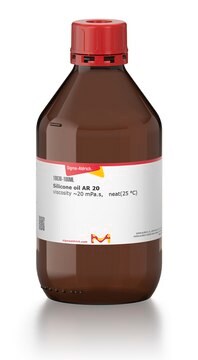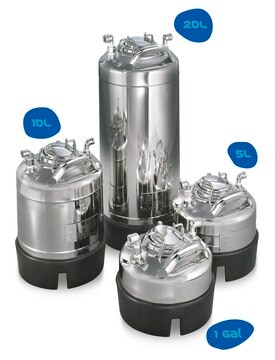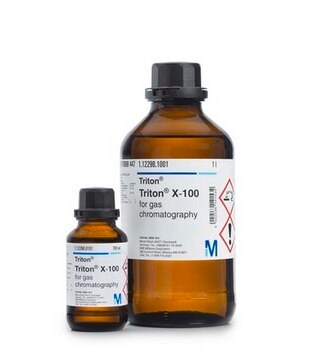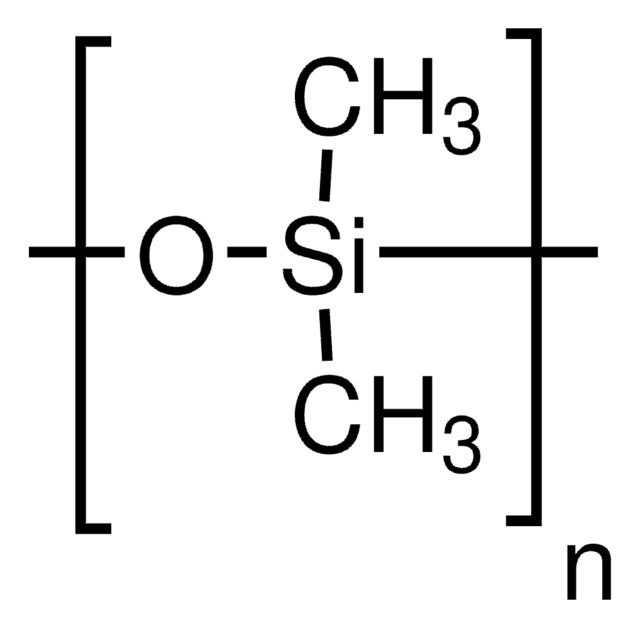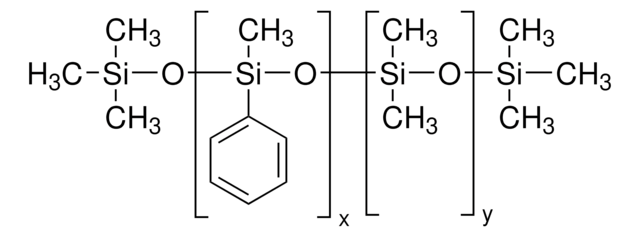146153
Silicone oil
for melting point and boiling point apparatuses
About This Item
Recommended Products
vapor density
>1 (vs air)
vapor pressure
<5 mmHg ( 25 °C)
5 mmHg ( 20 °C)
type
for melting point and boiling point apparatuses
parameter
−40-350 °F temp. range (−40-175 °C)
refractive index
n20/D 1.403 (lit.)
viscosity
45.0-55.0(25 °C)
bp
>140 °C/0.002 mmHg (lit.)
density
0.963 g/mL at 25 °C
Looking for similar products? Visit Product Comparison Guide
Application
- for melting-point and boiling-point apparatus
- in membrane contactors to impregnate fibers
- on rheometer samples (chicken skin and bovine gelatin) to prevent evaporation during heating using temperature sweeps and frequency sweeps
Biochem/physiol Actions
Features and Benefits
- High viscosity
- Low water solubility
- Low vapor pressure
Storage Class Code
10 - Combustible liquids
WGK
WGK 1
Flash Point(F)
214.0 °F - closed cup
Flash Point(C)
101.1 °C - closed cup
Personal Protective Equipment
Regulatory Listings
Regulatory Listings are mainly provided for chemical products. Only limited information can be provided here for non-chemical products. No entry means none of the components are listed. It is the user’s obligation to ensure the safe and legal use of the product.
JAN Code
146153-3KG:
146153-VAR:
146153-1L:
146153-500G:
146153-2.5L:
146153-BULK:
146153-1KG:
146153-250ML:
Choose from one of the most recent versions:
Already Own This Product?
Find documentation for the products that you have recently purchased in the Document Library.
Customers Also Viewed
Our team of scientists has experience in all areas of research including Life Science, Material Science, Chemical Synthesis, Chromatography, Analytical and many others.
Contact Technical Service